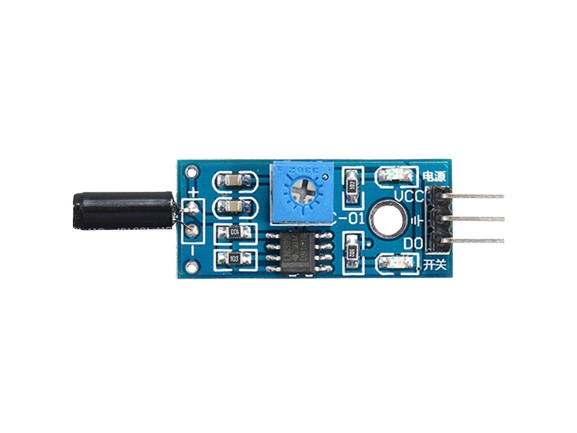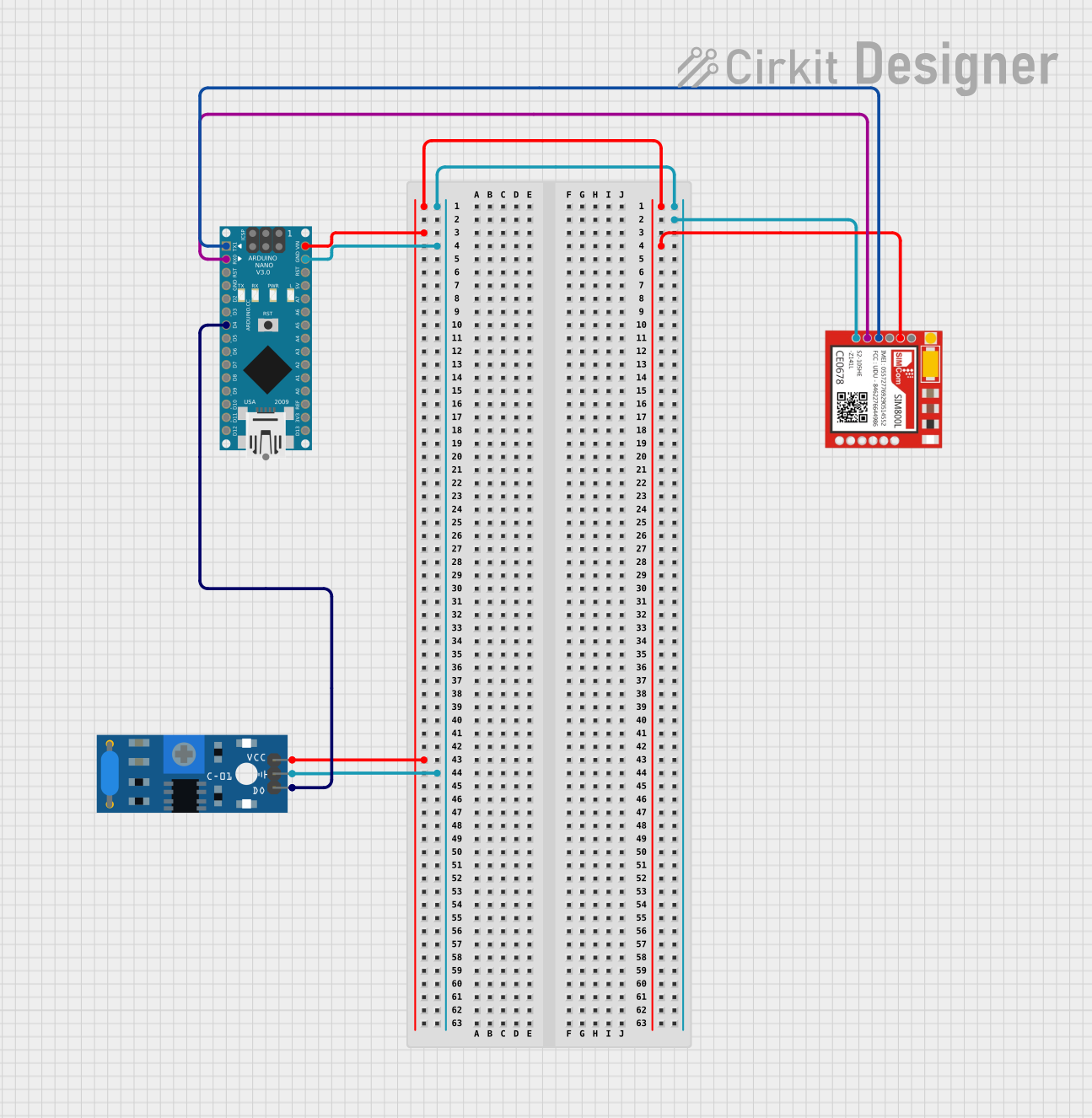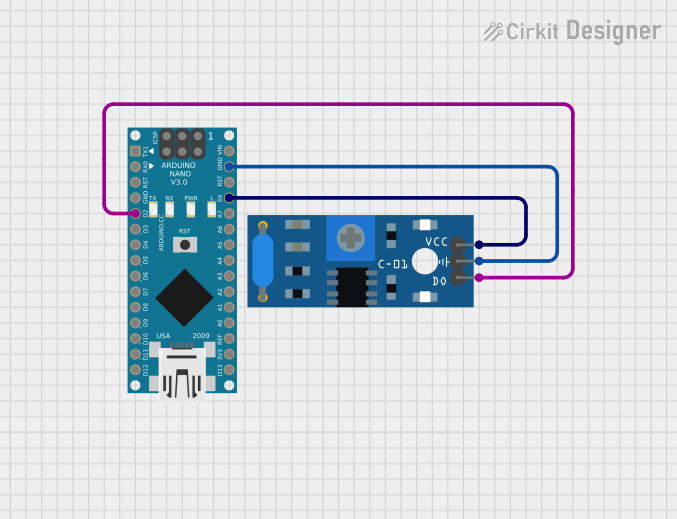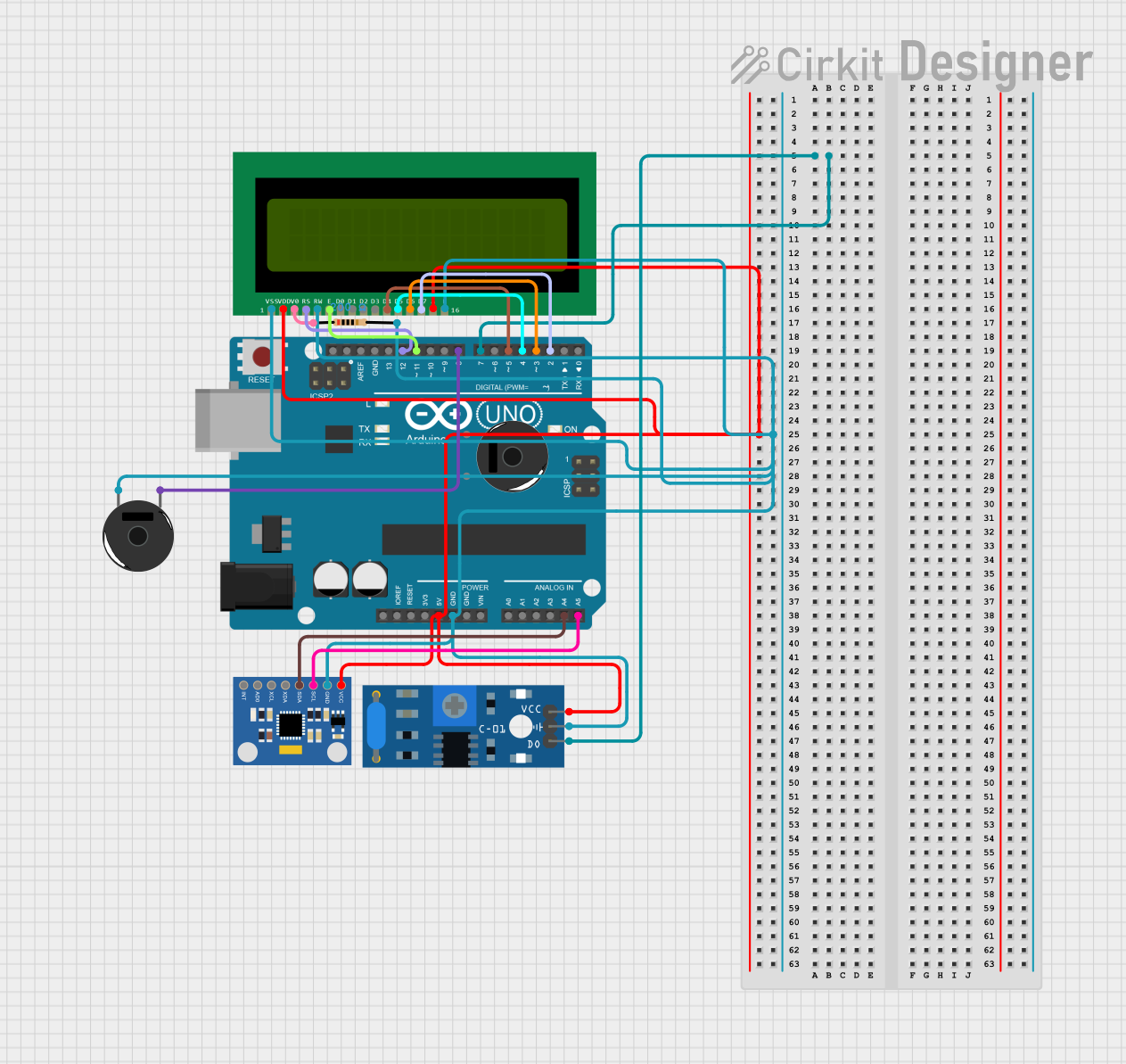
How to Use VIBRATION SENSOR SW-420: Examples, Pinouts, and Specs

 Design with VIBRATION SENSOR SW-420 in Cirkit Designer
Design with VIBRATION SENSOR SW-420 in Cirkit DesignerIntroduction
The SW-420 is a vibration sensor designed to detect vibrations and movements. It operates as a switch that changes its state when subjected to physical disturbances. This sensor is widely used in applications such as security systems, alarms, and robotics, where detecting vibrations or motion is critical. Its compact design and ease of use make it a popular choice for both hobbyists and professionals.
Explore Projects Built with VIBRATION SENSOR SW-420

 Open Project in Cirkit Designer
Open Project in Cirkit Designer
 Open Project in Cirkit Designer
Open Project in Cirkit Designer
 Open Project in Cirkit Designer
Open Project in Cirkit Designer
 Open Project in Cirkit Designer
Open Project in Cirkit DesignerExplore Projects Built with VIBRATION SENSOR SW-420

 Open Project in Cirkit Designer
Open Project in Cirkit Designer
 Open Project in Cirkit Designer
Open Project in Cirkit Designer
 Open Project in Cirkit Designer
Open Project in Cirkit Designer
 Open Project in Cirkit Designer
Open Project in Cirkit DesignerTechnical Specifications
The SW-420 vibration sensor module typically includes the SW-420 sensor and a comparator circuit for signal processing. Below are the key technical details:
- Operating Voltage: 3.3V to 5V DC
- Output Type: Digital (High or Low)
- Sensitivity Adjustment: Via onboard potentiometer
- Output State:
- High (logic 1) when no vibration is detected
- Low (logic 0) when vibration is detected
- Dimensions: Approximately 32mm x 14mm x 8mm
- Operating Temperature: -40°C to 85°C
Pin Configuration and Descriptions
The SW-420 vibration sensor module typically has three pins. The table below describes each pin:
| Pin Name | Description |
|---|---|
| VCC | Power supply input (3.3V to 5V DC) |
| GND | Ground connection |
| DO | Digital output signal |
Usage Instructions
How to Use the SW-420 in a Circuit
- Power the Sensor: Connect the VCC pin to a 3.3V or 5V power source and the GND pin to the ground.
- Connect the Output: Connect the DO (Digital Output) pin to a microcontroller or other digital input device to read the sensor's state.
- Adjust Sensitivity: Use the onboard potentiometer to adjust the sensitivity of the sensor. Turning the potentiometer clockwise increases sensitivity, while turning it counterclockwise decreases sensitivity.
- Monitor Output: The DO pin will output a HIGH signal when no vibration is detected and a LOW signal when vibration is detected.
Important Considerations and Best Practices
- Power Supply: Ensure a stable power supply to avoid false triggers.
- Mounting: Secure the sensor module firmly to prevent unintended vibrations from affecting its performance.
- Debouncing: If the sensor is connected to a microcontroller, consider implementing software debouncing to filter out noise or rapid state changes.
- Environment: Avoid exposing the sensor to extreme temperatures or moisture, as this may affect its performance.
Example: Connecting SW-420 to Arduino UNO
Below is an example of how to connect and use the SW-420 vibration sensor with an Arduino UNO:
Circuit Connections
- Connect the VCC pin of the SW-420 to the 5V pin on the Arduino.
- Connect the GND pin of the SW-420 to the GND pin on the Arduino.
- Connect the DO pin of the SW-420 to digital pin 2 on the Arduino.
Arduino Code
// SW-420 Vibration Sensor Example with Arduino UNO
// Connect the DO pin of the sensor to digital pin 2 on the Arduino
const int sensorPin = 2; // Digital pin connected to the sensor's DO pin
const int ledPin = 13; // Built-in LED pin on Arduino
void setup() {
pinMode(sensorPin, INPUT); // Set sensor pin as input
pinMode(ledPin, OUTPUT); // Set LED pin as output
Serial.begin(9600); // Initialize serial communication
}
void loop() {
int sensorState = digitalRead(sensorPin); // Read the sensor's output
if (sensorState == LOW) {
// If vibration is detected, turn on the LED
digitalWrite(ledPin, HIGH);
Serial.println("Vibration detected!");
} else {
// If no vibration is detected, turn off the LED
digitalWrite(ledPin, LOW);
Serial.println("No vibration.");
}
delay(100); // Small delay to stabilize readings
}
Troubleshooting and FAQs
Common Issues and Solutions
Sensor Not Responding
- Cause: Incorrect wiring or insufficient power supply.
- Solution: Double-check the connections and ensure the power supply is within the specified range (3.3V to 5V).
False Triggers
- Cause: High sensitivity or environmental noise.
- Solution: Adjust the sensitivity using the onboard potentiometer and ensure the sensor is mounted securely.
No Output Signal
- Cause: Faulty sensor or damaged module.
- Solution: Test the sensor with a multimeter or replace it if necessary.
FAQs
Q: Can the SW-420 detect continuous vibrations?
A: The SW-420 is designed to detect sudden vibrations or movements. For continuous vibration detection, additional signal processing may be required.
Q: Is the SW-420 suitable for outdoor use?
A: The SW-420 is not waterproof or weatherproof. It is recommended to use it in a controlled indoor environment or protect it with a suitable enclosure.
Q: How do I increase the detection range?
A: The detection range can be adjusted by turning the onboard potentiometer clockwise to increase sensitivity.
Q: Can I use the SW-420 with a 3.3V microcontroller?
A: Yes, the SW-420 operates within a voltage range of 3.3V to 5V, making it compatible with 3.3V microcontrollers like the ESP8266 or ESP32.